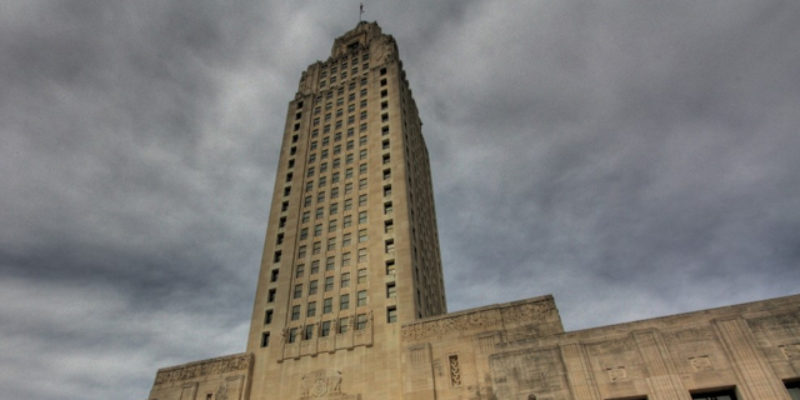A couple of interest groups graded Louisiana’s legislators harshly for their votes last session. But a more comprehensive overview shows things weren’t as “bad” as these groups make them out to be.
This month, stalwart grader the Louisiana Association of Business and Industry put out its annual scorecard, while Americans for Prosperity launched its initial version. Both hew to conservative issue preferences, with the former representing business interests and the latter ideological conservatives.
LABI provides a listing for every legislator and grades them on a long list of votes, some procedural, some final, with some counting for as little as less than one percent of the cumulative score and the most about ten percent (weighings varied between chambers). By contrast to this completeness, AFP does not attempt an aggregate listing nor a grade; it simply shows how legislators who represent a postal address voted on eight measures, most of these also appearing on LABI’s.
So for AFP’s site, this would require parsing through dozens of addresses to see all, but with knowledge of the picked final votes on bills, it’s clear that the majority of lawmakers had more misses than hits according to the group. In the case of LABI, it computes clear statistics for each that assigns a letter grade, leading to “failing” grades (below 60) for about half of the Legislature. This measure also has the advantage of comparisons the previous years, which reveal that the 51 aggregate score was the lowest since 2004 by far, and a full 15 points lower than in 2014.
But both paint an unnecessarily pessimistic (if you agree with the groups’ goals) picture of legislators this year, because both concentrate heavily, if not exclusively in the case of AFP, on votes that deal with budgets and tax measures. About two-thirds of the LABI Senate score and over four-fifths of the House score was based on these. And while such votes are important and were disappointing in the main to conservatives who wanted to see smaller government instead of tax increases, they don’t tell the whole story.
Every year, as part of my other blog that reviews and reports upon legislation when the Legislature is in the session, the Louisiana Legislature Log, I compile a voting scorecard. It attempts to be a comprehensive overview of votes, along a dimension the endpoints of which are conservatism/reformism and liberalism/populism, picking out bills of some importance that present a choice in regards to these concepts and where there was at least some disagreement among legislators. These also are weighed by importance, although none singly this year was less than five percent nor more than 15 percent. More importantly, the influence of changes in tax rates or impositions is significantly smaller, at just 40 percent of the aggregated score for senators and 50 percent for representatives. Nor are they limited, as in the case of LABI, just to issues with a business connection, although many have at least an indirect one. As for LABI higher scores represent more conservative preferences, with the LLL higher scores represent more conservative/reform preferences.
This year, the average LLL aggregate score was almost 57, so not far off the LABI average aggregation. However, this does not represent much of a departure from historical norms, being just 2.5 points below the 2014 score. In fact, it was about four points higher than the average since 2004 inclusive, where understandably until Republicans gained a majority in both chambers in 2010, the lifetime average had been a bit below 50 whereas for LABI this was the first time its scale has gone below 60 in that period.
Keep in mind that the indices don’t measure exactly the same thing, which sometimes leads to a wildly differing scores for the same legislator. For example, state Rep. Sam Jones was lauded by LABI as the only high-scoring Democrat for last session, yet he mustered only a 45 according to the LLL, half his LABI score. By contrast, Democrat state Rep. Pat Smith, a historically low LLL scorer who actually finished with the lowest score in 2014, cast votes in a way that the LLL index ranked her on the conservative/reform side of the leger at 65 while LABI scored her at about half of that. But more often than not, the two indices agree on the relative placement of a legislator; for example, Republican state Sen. Dale Erdey was the third-ranked LABI scorers among senators at 80, while he scored perfectly on the LLL index, and perfect LABI scorer Republican state Rep. Ray Garafalo managed sixth highest at 75 in the House on the LLL index.
However, the LLL index does try to be more comprehensive in its approach and (obviously as I would think) gives a more well-rounded view of legislators’ voting habits. Most years, that gets them as a whole into more trouble among conservatives than LABI’s scores would indicate, but the extreme binging on tax increases this year punished them disproportionately with LABI. So, maybe their overall performance this year wasn’t great, and criticism levied by LABI and others that they gave short shrift to spending reductions at the expense of enthusiasm for tax increases certainly is valid, but they may not have failed as much as observers interested in a full spectrum of conservative issues might have gathered from the publicity by LABI and AFP.
Advertisement
Advertisement

